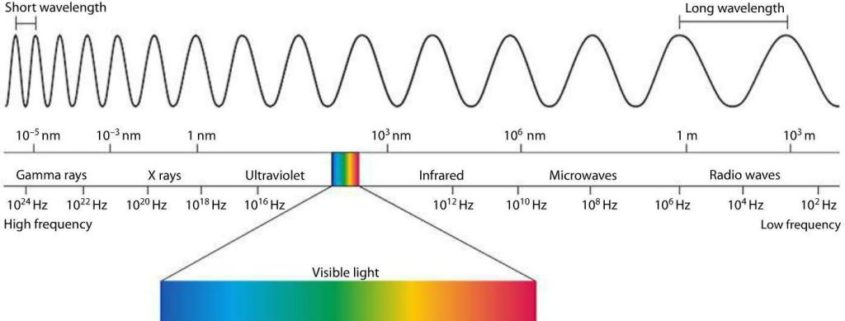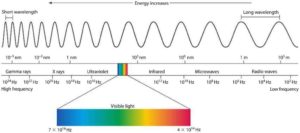How should we compare LLLT devices?
Is there really a difference between Low-Level-Light Therapy (LLLT) devices for hair restoration? The answer is decidedly yes. While most devices look similar (often imitating the design of The Original LaserCap), the treatments they provide can differ dramatically.
But how exactly do LLLT devices differ? And what is the best way to measure these differences?
The are many ways these differences are described – irradiance, fluence, power, number of diodes, intensity, wavelength, ect. Terminology is used inconsistently in both academic and non-academic contexts, with different terms often used to describe the same parameter. In any case, this can be difficult to understand especially if you are like me and you struggle with basic algebra. But I did find that much of my confusion was alleviated by starting with a more solid conceptual understanding of the relevant physics.
The biological effect of LLLT essentially arises from a delivery of energy, from the device, to the patient. This energy is of course in the form of light, and is measured in Joules (J).
The nature of this biologic effect depends very closely on the specific spatial and temporal pattern of energy delivery. That is, how much energy is delivered, over what time, and over what area.
There are a few ways to describe this:
Power (aka radiant power, or radiant flux), indicates energy delivered per unit time. The SI unit for power is Watts (W), where 1 W = 1 J/s
Fluence (aka radiant exposure, or energy density), indicates the amount of energy delivered per unit area. The SI unit for fluence is J per square meter (J/m^2).
Intensity (aka irradiance, or power density), indicates energy delivered per unit time and area. The SI unit for irradiance is W/m^2.
So with these parameters in mind, we can describe any given LLLT device by (1) power output, and, (2) area of coverage, which in turn can be combined into output intensity.
These device parameters then interact with treatment parameters, namely amount of time the device is worn per treatment, and frequency of treatments. By combining both device and treatment parameters, we can see the full pattern of spatial and temporal energy delivery to the patient.
However this does not tell the whole story for a few reasons. First there are different kinds of light (or more broadly electromagnetic radiation), usually described by the property wavelength. Electromagnetic radiation can be regarded as acting like both waves and particles at the same time. Wavelength describes the distance between peaks of the waves, and is directly related to the energy of the particles, which are called photons. The range of wavelengths and their photon energies, are usually described as the electromagnetic spectrum, as can be seen in the following image:
The energetic nature inherent to each type of electromagnetic radiation causes different regions in the spectrum to have distinct properties, and physical and chemical interactions with matter. High energy, short wavelength electromagnetic radiation (some ultraviolet radiation, X rays, and Gamma rays), can ionize molecules, that is strip them of their electrons. This can damage cells, tissues, and DNA, causing acute radiation poisoning and death with high intensity exposure, or cancer if exposure is of lower intensity. On the opposite side of the spectrum, low-energy, long wavelength electromagnetic radiation (eg infrared, and microwaves), is unique in that it can can more easily penetrate and heat matter.
In the middle is the visible spectrum, electromagnetic radiation that is visible to the naked eye, and what we call “light”. Different wavelengths or photon energies within the, visible spectrum, are perceived by the human eye as being different colors; higher energy and shorter wavelength light is blue, while longer wavelength and lower energy light is red. LLLT of course utilizes wavelengths within the visible spectrum. As described in the prior post, the specific wavelength utilized in LLLT is one of the main determinants of its biologic effect, as a specific chromophore will only be activated by light within a specific range of wavelengths.
Second is the type of light source. Lasers are most commonly used in LLLT. Lasers are unique in that they emit light coherently, which allows them to be more focused over smaller areas, transmit over longer distances, and emit light within a more narrow range of wavelengths. Other LLLT devices use light emitting diodes (LEDs), which although more economical, emit non-coherent light of very different quality. There is some evidence that low-level treatment with LED can produce similar biologic effects t0 laser although this research is still ongoing.
A final parameter is pulsing. Most light sources are not pulsed. Instead they emit continuous wave light, that is at a constant intensity, which appears unchanging to the naked eye. Pulsed wave emission on the other hand involves turning on and off the light source many times per second. There are advantages to both which we will be discussing in next week’s post!
In summary here is is a good way to compare different LLLT devices:
- Total power output (W)
- Area of illumination (m^2)
- Intensity of illumination (W/m^2)
- Type of light source (Laser or LED)
- Pulsed or continuous emission

 1-855-424-7774
1-855-424-7774


